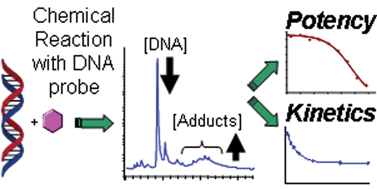A tool for rapid screening of direct DNA agents using reaction rates and relative interaction potency: towards screening environmental contaminants for hazard†
Abstract
DNA damage represents a potential

* Corresponding authors
a
Exposure and Biomonitoring Division, Health Canada, AL: 0800C, EHC, Tunney's Pasture, Ottawa, Ontario, Canada
E-mail:
yong-lai.feng@hc-sc.gc.ca
Fax: +1 613 946-3573
DNA damage represents a potential

 Please wait while we load your content...
Something went wrong. Try again?
Please wait while we load your content...
Something went wrong. Try again?
J. M. A. Gavina, M. Rubab, H. Zhang, J. Zhu, A. Nong and Y. Feng, J. Environ. Monit., 2011, 13, 3145 DOI: 10.1039/C1EM10511F
To request permission to reproduce material from this article, please go to the Copyright Clearance Center request page.
If you are an author contributing to an RSC publication, you do not need to request permission provided correct acknowledgement is given.
If you are the author of this article, you do not need to request permission to reproduce figures and diagrams provided correct acknowledgement is given. If you want to reproduce the whole article in a third-party publication (excluding your thesis/dissertation for which permission is not required) please go to the Copyright Clearance Center request page.
Read more about how to correctly acknowledge RSC content.
 Fetching data from CrossRef.
Fetching data from CrossRef.
This may take some time to load.
Loading related content
